The HeadRoom amplifiers are some of the earliest dedicated headphone amplifiers around. While they continue to get good reviews around the web even by big publications such as the MacWorld, I just don’t hear the enthusiasts talking about these amps aside from short one liner mentions on post-meet impressions. I really wanted to find out what they are all about, so I asked Ken at ALOAudio to send me three of the lower end models: the Micro, the Portable Micro, and the Total Bithead amplifier (the Bithead will be on a separate article).
HeadRoom has an amplifier for every budget, from the entry level Airhead portable amp to big Balanced Ultra Desktop amplifier. I didn’t want to jump to the big desktop models since I wasn’t sure of what to expect from these amplifiers, so I asked Ken to send me two of the entry level desktop models. The Micro amp is the basic entry level desktop amplifier, priced at $349. It requires a separate power supply to run, and it’s designed to do one thing: powerful headphone amplification in a small footprint. The Portable Micro Amp, priced at $449, is a jack-of-all-trades. It has the ability to run on batteries, while also equipped with a built-in DAC. The DAC takes in all sort of digital inputs, from Optical Toslink (for Apple laptops), Coaxial, to USB. Although it also comes with a wallwart power supply, you have the option to run it purely on batteries, an interesting feature in my opinion.
Build Quality
I rarely talk about build quality when doing my reviews, but sometimes they build a product so well that you just want to have it because it’s build so well. These HeadRoom amps are such a product. I don’t think I’ve ever seen a build quality like this. From the whiskey-flask shaped metal enclosure, the luxurious black finish, the urethane rubber edges that functions as a bumper, equipment foot, and a stacking mechanism, the rounded edges, the smooth aluminum volume knob, the toggle switches, to the subtle power LED on the HeadRoom logo: every inch of the amplifiers has a level of craft I haven’t seen before on something in this price range. Even after living with these amps for more than a few weeks, I still like to take a close look at it once in a while to appreciate its excellent build. I just have to say it again: The build is phenomenal, even if they don’t look like a thousand dollar amp.
Now comes the sound review part, and I’m going to start with the basic Micro amp.
The HeadRoom Micro Amp
The Micro amp is a basic, headphone amplification only box. These days, it may seem a little outdated, seeing how you can find smaller and less expensive devices (say the Audinst HUD-MX1) that combines headphone amplification and a high quality 24/96 DAC function in one box. Not only that, but I’ve gotten used to the convenience of using a USB power supply with many of the newer DAC/Amps, and having to run a separate power supply line just for the headphone amplifier is something that I don’t like doing (you know those slots on the power strip run out very fast, given all the gadgets we have these days). Anyway, the power supply unit is there for a good reason: to supply a high quality, regulated, bipolar supply to the amplifier. This is clearly a much higher quality power supply than the average wallwart, and as we can see later, it does good things to the sound of the Micro Amp.
One of the first thing I noticed about the Micro Amp is how narrow things sounded out of it. Certainly this is not the amplifier that wow you with an expansive soundstage. I was a bit underwhelmed, to be frank, and I immediately missed the much larger soundstage of the Schiit Asgard that I no longer have with me. But for the sake of comparison, even the built in amp on the Audinst HUD-MX1 is more spacious sounding than this. The tonal balance, however, is very nice with a proper midrange and low end body, and just enough treble to keep things lively. Another thing that I noticed is how punchy this little amplifier is. The bass punch is superb, perhaps even unrivaled by other amps in its class.
That first impression of a narrow soundstage never changed throughout the time of the review. However, I begin to appreciate a lot of things in the sound of the Micro amp. Despite the narrow soundstage, if you feed it with a good source, the depth of the soundstage is quite good and that makes up somewhat for the narrow width. Also, one of the things that they listed on the spec sheet is the DC coupled design, and what I found is that the amplifier section is truly very transparent. The much newer Apex’s Butte is still king of transparency among the small desktop amps, but the Micro amp is definitely a strong performer here.
Another thing that I heard was the level of micro details and articulation. Especially on the bass section, the articulation is extremely good for a small amp like this. Not only is it articulate, but it also has an awesome hitting bass that you can feel even on small piano notes. The bass is definitely one of the strongest point with the Micro amp, and that MJD243/253 transistors on the output stage truly shows its strength here.
The Micro amp was designed and conceived during the time when Tyll Hertsens (now editor at Inner Fidelity) was the chief at HeadRoom, and I think he probably has a lot of say on how the HeadRoom amps should sound. And the Micro amp is exactly what I would expect from having someone like Tyll behind it. The amplifier has all the right fundamentals, despite the lack of an expansive soundstage that often makes for a strong wow-factor. The tonal balance is correct — I wouldn’t change a thing about it. The way it does bass, both in articulation and punch is the best I’ve heard on an amplifier this size. And micro detail and transparency levels are something to be proud of, again from an amplifier this size. Even compared to the much more famous, now discontinued Gilmore Lite amp, I think the Micro amp is just better in overall musicality, especially on the midrange and bass. So, overlooking the weak soundstage, I think the Micro amp has all the right things that we look for in an amp. From the ultra sensitive JH5 to the relatively hard to drive Sennheiser HD580, the Micro amp delivered.
Despite those strong comments, I still find it hard to make a big recommendation out of the Micro amp. I think the level of competition among amplifier manufacturers have given us a tremendous improvement in the level of sound quality you get for the price. And at the moment, I still think that Schiit’s Single Ended Class A FET Asgard, no matter what people say about the name, still rules the realm of desktop headphone amplifiers up to the $500 bracket. And whilst the new DAC/Amp boxes would continue to have amplifiers that are less potent than the Micro amp, I can’t help but thinking that given the low price of today’s DAC/Amp boxes, it would probably makes more sense for someone to go for a one set up box that they can hook to their laptops and be done with.
Now if HeadRoom decides to up the game and come up with a new (or improved) design for the Micro amp, I don’t doubt a bit that they have a solid chance in taking the crown from Schiit. The current Micro amp is a good amp, but the competition is just better.
The Portable Micro Amp
The Portable Micro Amp is impressive because it packs a lot of things into the same enclosure as the Micro Amp. For $449, it’s just a tad more than the Micro, but you get a lot more for the price. As I’ve mentioned, built in DAC with USB, Toslink and Coaxial, battery power, and headphone amplifier all in one box. The part that I really love is the battery power. I love the fact that I can hook it up to a computer with the USB DAC interface, and the next minute take it out and pair it with a DAP for a nice headphone listening session on the porch.
On the shot above, you can see that the Li-ion battery took almost 50% of the real estate of the Portable Micro Amp. Although the DAC section is stacked on top of the amplifier section, you only get a small amount of space left to design a proper amplifier with. As a result, sound quality suffers quite significantly.
The Portable Micro Amp would be a good device to recommend to non-audiophile friends who wants a good device to power their headphones. In terms of sound quality, however, I simply can’t recommend it. The PCM1793-based DAC section is decent, but it’s simply outclassed by today’s newer DACs, even the likes of Fiio’s E10. Likewise, the headphone amplifier struggles to provide quality sound as it ranks much lower than the sound I hear on the Micro Amp. While I love the battery-powered portability, I simply can’t live with it, even if I feed the amplifier with a good source like the DAC from the Hifiman HM-602.
It’s quite a shame, given how much I love the features and the build quality of the Portable Micro Amp. But features without a sound quality to match don’t mean much to me.
A note about the Crossfeed
Both amps come with a standard crossfeed switch. I’m not quite sure if the crossfeed circuitry is the same on both amps, but the effect is quite similar. Like other crossfeeds, it takes the left and right signal and sort of “blend” it together. As a result, you get a much better center image on the soundstage. There is a price to pay, however, as clarity suffers and soundstage width decreases. I can’t think of one crossfeed filter that doesn’t have this penalty, from the $349 Micro amp, to the Meier Concerto, the Grace m902, and even the mighty SPL Phonitor. And given how good today’s headphone recreate the center image (even low budget stuff like the Superlux HD661 or the Shure SE215), I don’t think crossfeed circuits are necessary anymore. As long as your source is good, the center image will be there, even without crossfeed.
End Words
Not quite a flowery review, but I will keep both amps in my possession as I do love the way they are build, and even sometimes take the Micro amp for a listen.
Special thanks to ALO Audio for the HeadRoom amplifiers.
[adrotate banner=”10″]
Gear used for review
HeadRoom Micro Amp and Portable Micro Amp, Audinst HUD-MX1, JDSLabs C421 and CmoyBB, Fiio E10, Hifiman HM-602, Headstage USB Cable, JHAudio JH5 and JH10X3, Shure SE215, Alessandro MS-Pro, Beyerdynamic T1, Sennheiser HD800 and HD580, Superlux HD661 and probably a few other things.






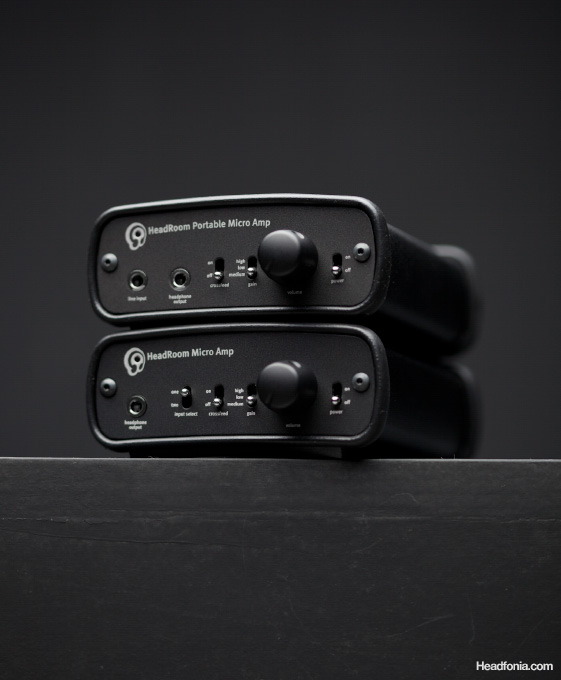
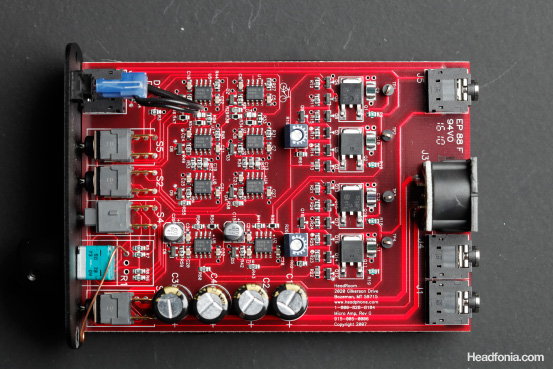
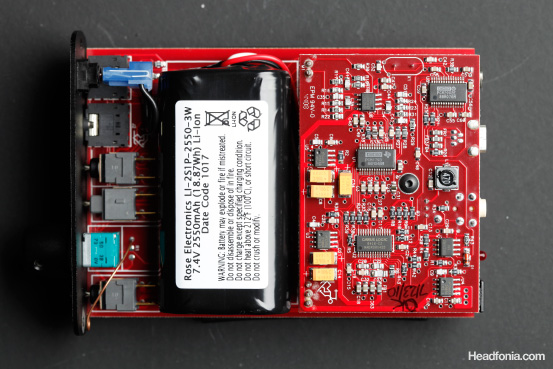
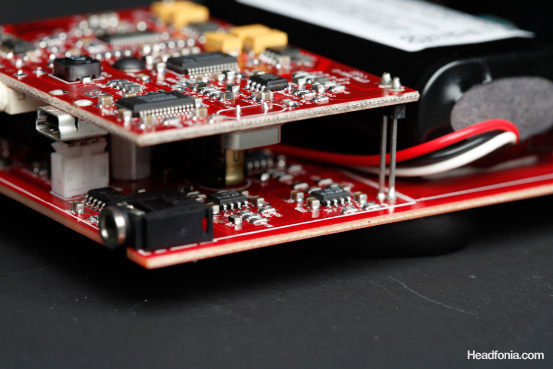
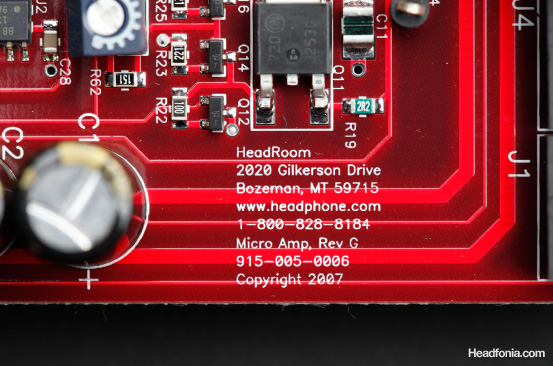
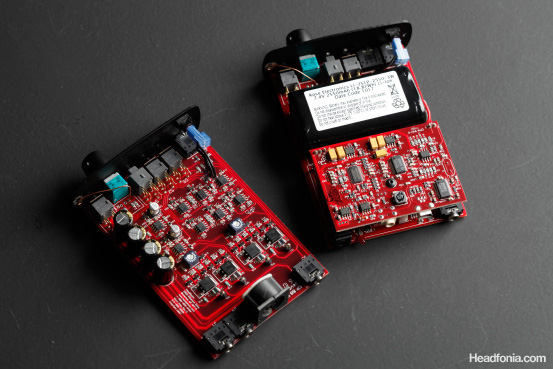
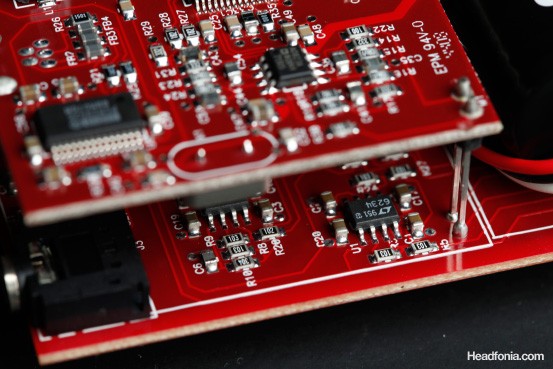
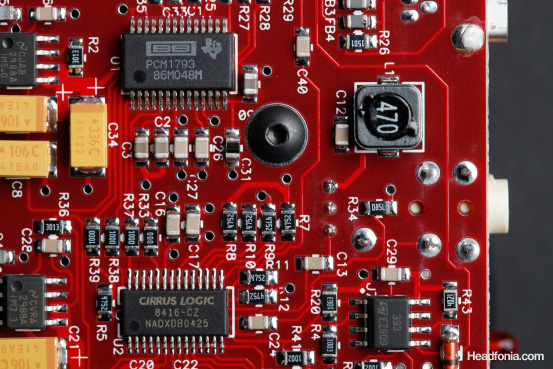
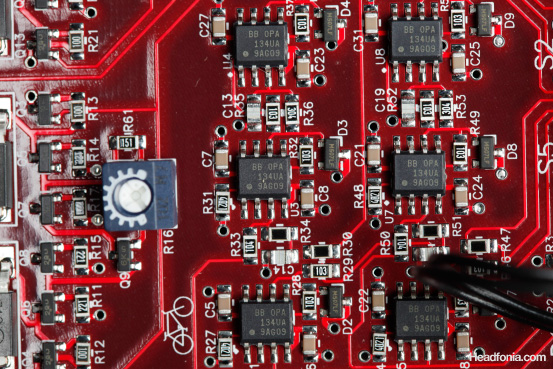
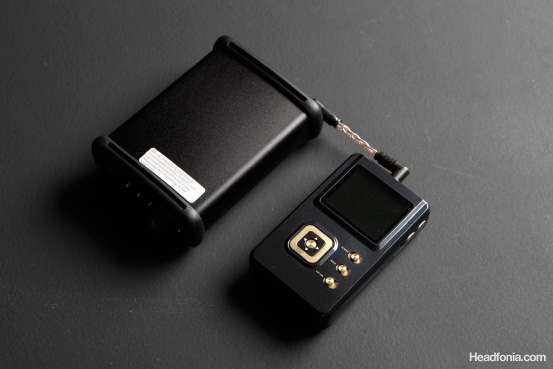
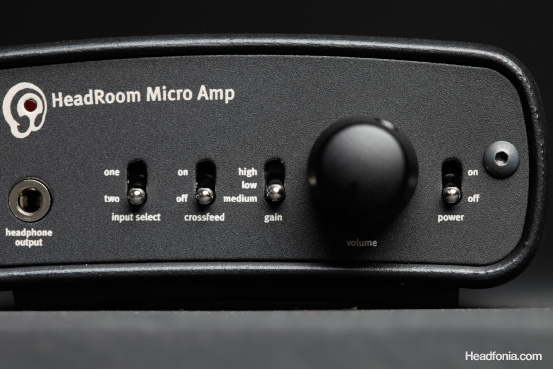
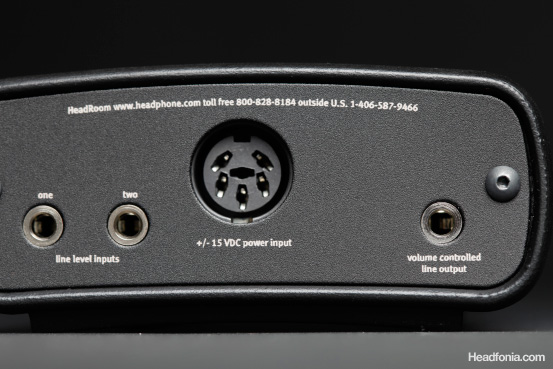
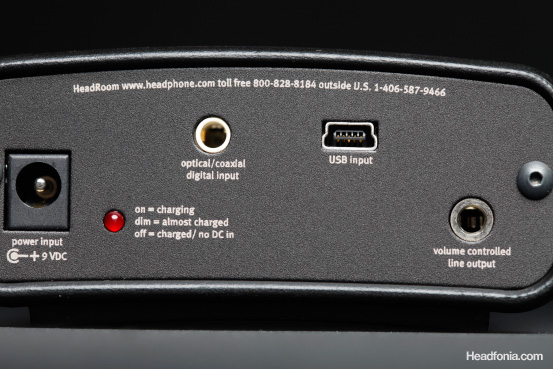
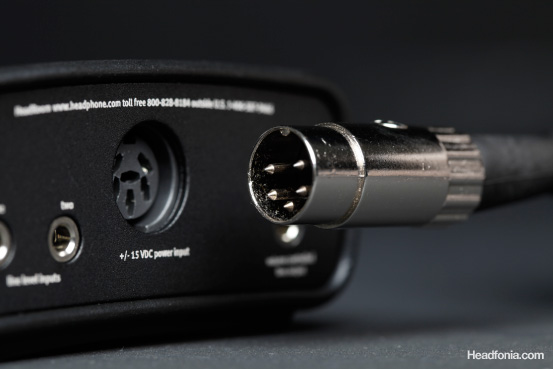
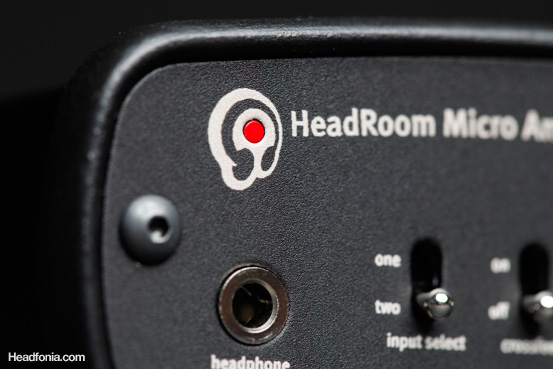
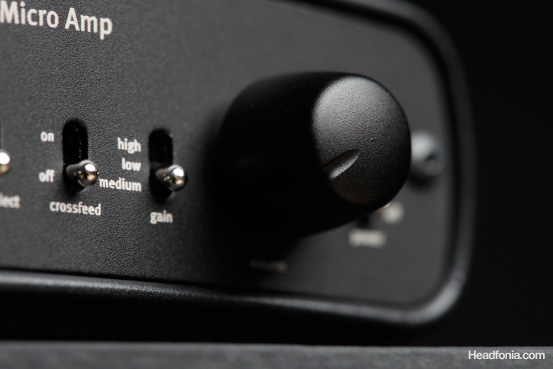
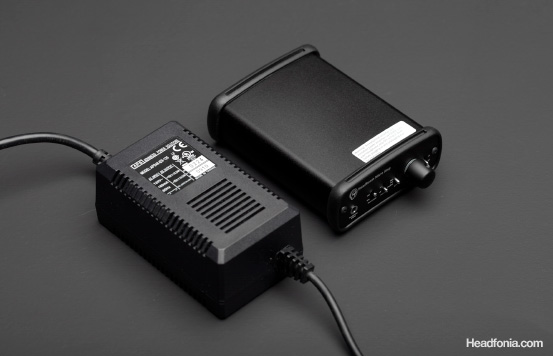
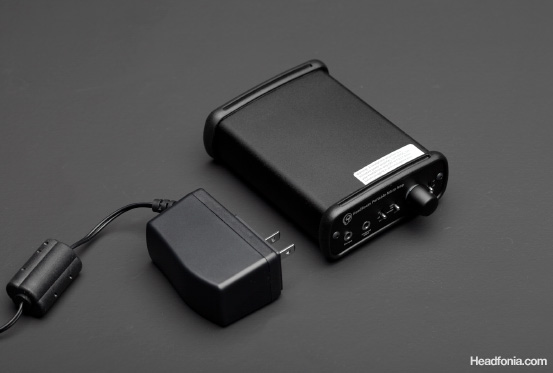

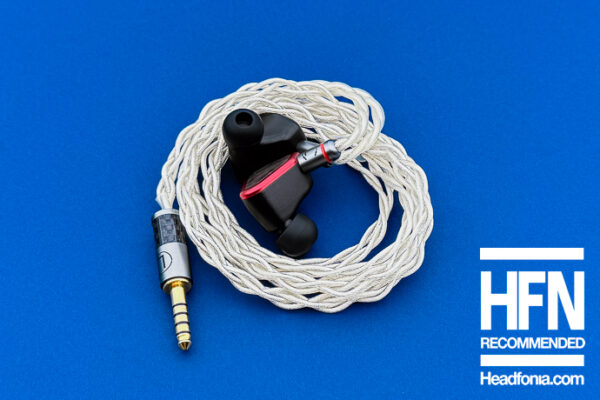
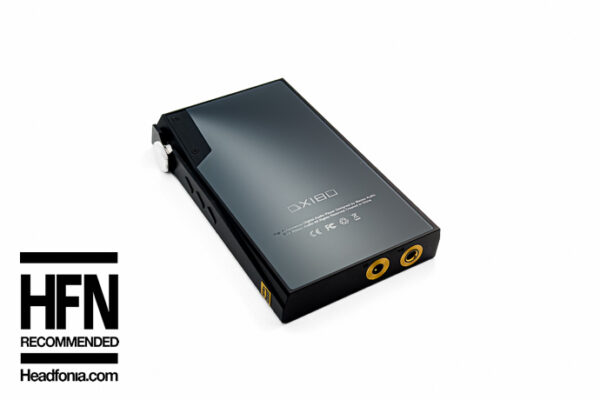
Donunus
The crossfeed is not really just there for getting a better center image. Actually the center image gets kinda thick and muddled with crossfeed. What its aiming at is to get a good left to mid left to center to mid right to right transition and to reduce listener fatigue when listening to exaggerated stereo mixes like the stereo albums of the Beatles or the Doors for example 🙂
Mike
The center image gets muddled, but the presence becomes more audible. So it’s actually the same thing as what you’re saying — getting a better left to right transition.
Perhaps I should say it differently next time, because you have a point there, when I say “improving the center image” that implies that there is no muddying done to it.
Thanks for the correction, Donunus.
Yes, and definitely reduces listener’s fatique.
Mike
Hope you don’t mind me archiving your comments in the facebook notes section. 🙂
Donunus
Sure, post away 🙂
I love crossfeed by the way but the thing about it is, is that it is sort of like watching a standard movie with 3d glasses with simulated 3D engaged. If you watch a regular movie on simulated 3d, it wouldn’t be as good as watching a movie that is encoded with 3d information on the film itself. I would liken the movie with the 3d encoding with a binaural/dummy head recording where the 3d information is already there naturally
The Wuss
Donunus is correct. The crossfeed is not designed to help the audio signals that are already “shared” (the center stereo image). It is designed to help the listener spacially locate sounds that are panned left of center and right of center.
Unfortunately, crossfeed signals that are based in the analog domain will suffer some degradation of the sound.
The best I’ve heard by far is the crossfeed in Meier’s DAC, the StageDAC.
It is in its on category, Mike. You should really give it a listen if you haven’t. I’d love to know what you think of it…
Mike
I’ve reviewed the StageDAC. I think the Crossfeed is okay. It has some parameter control which you don’t get with the other amps, but the SPL Phonitor really has the best crossfeed control.
http://www.headfonia.com/meier-audio-concerto-and-stagedac/
http://www.headfonia.com/spls-phonitor-and-auditor/
Talking about crossfeed in the analog domain, you are right. I should give a digital crossfeed a try sometimes.
Donunus
A good digital crossfeed to start out with would be headfit. Its very subtle yet it works. Most people might not even notice the difference in the sound vs the sound with the crossfeed off once it is set up correctly. The BS2B Xfeed is too veiled, the naive Xfeed a little thin and glary, JRiver Xfeed also a little thin and glary, Isone Pro too complex and does too much to the sound but fun at first, Redline monitor.. Similar functionality to the phonitor but a little dry sounding, etc… but Headfit is subtle and smooth without much added coloration 🙂
Mike
Thanks Donunus. A little busy to look into those at the moment, but thanks. 🙂
Mike
The Wuss,
Hope you don’t mind me archiving your comments in the facebook notes section. 🙂
https://www.facebook.com/note.php?saved&¬e_id=289080391136665
Orta03
Simply, another excellent read Mike. I tell ya, in just the past five years it’s amazing how the industry has progressed looking at all the quality amps and amp/dac combos that are produced now, all at very affordable prices. Just to get a decent amp back in the day, one needed to spend at least 300 dollars. Now for less one can get some real nice gear.
On the topic of the micro amp, I’ve read that the astrodyne power supply that Headroom carries, improves the sound of their micro line(micro dac & amp). It might even improve the micro amp’s soundstage a bit. So it might be worth looking into. Anyway, keep up the great work Mike! Love the new gallery feature.
Mike
Thanks, Orta. I agree, back then $300 seems to be the absolute minimum for a good amp. These days, it’s amazing how much quality you can get for less than $100.
Yes the Astrodyne supply is advertised as the improved PSU unit. I’m quite sure that given the transparency of the Micro amp, a better power supply will definitely make things better.
I had a chance to test the Astrodyne with the Apex Amps but unfortunately it’s not here for testing with the Micro Amp.
http://www.headfonia.com/apex-amplifiers-the-peak-the-arete-and-the-volcano/
eugenius
There’s an ultra micro amp and an ultra micro dac Mike, those are the ones you really want. They’re practically half of my balanced amplifier and DAC when run with the Astrodyne PSU, but in a small form factor.
Donunus
Problem is they are discontinued
Austin Morrow
I’d love to hear about the Ultra Desktop Amp & Ultra Desktop DAC combo.
Mike
Sorry, no plan for those at the moment. 🙂
Marcos Moreira
Well, it doesn’t look too promising when the best part of a headphone amplifier is it’s build quality 🙂
But the conclusion is obvious, i never got floored with the review; the need of a power source on the Micro is an additional nuisance.
When i do get to buy another one (i currently have a Fiio E7/E9 combo, nothing fancy), the TTVJ Slim looks to me as a top contender. But who knows, portable amps are booming right now, next year should be interesting!
Mike
Yes, at the end I wasn’t totally floored with the products either. As much as I love the sound from the Micro amp, it’s not too competitive in today’s landscape, and I agree about the separate power source being a hassle.
Compared to the Micro amp, the TTVJ Slim is not quite as articulate though and the bass is still better on the Micro Amp.
Marcos Moreira
I didn’t expect that, Mike. After all, i was looking at the TTVJ based on your review 🙂
That’s the thing, you have to keep adding these new amps to your “usual suspects” review! After all, a $449 product that “doesn’t sound that great” may still be pretty darn good comparing to the el-cheapos.
By the way, i’m assuming the TTVJ’s soundstage is more spacious, am i right? I like that. And overall, which one did you like best?
Mike
Hi Marcos,
I haven’t compared the TTVJ directly to the HeadRoom Micro, but yes I think the TTVJ *from memory* is more spacious.
At the time I am really liking the HeadRoom simply because the bass punches hard and good. The TTVJ is more convenient to use though — no PSU required.
Marcos Moreira
Thanks, Mike!
Mike
You’re welcome!
Travis D
Thanks for the very good review. Interesting that you seem to prefer the Asgard to the Micro Amp. I had the Asgard and I actually upgraded to the Micro Amp due to having better synergy with the K702 and my HD-650. I really disliked the K702 with the Asgard.
I actually skipped the M-Stage for the Micro Amp. The soundstage of the Micro Amp isn’t huge, but for the K702, I actually prefer this, but not everyone will. Any ideas how the Micro Amp compares to the M-Stage? Somedays I’m tempted to buy it, but it may just be a side-grade with a slightly larger soundstage. Micro Amp is a really nice match with my Q701!
Mike
Hi Travis,
Yes synergy may be better with the Micro amp, although I totally enjoy the HD650 with the Asgard as well. The K702 is a big unnatural headphone, it’s hard to like it with anything. 😉
Now the M-Stage, it has gobs of power but not quite the refinement and detail level of the Micro amp. If you are happy with the Micro amp, I think you should just stick with it, perhaps upgrade the power supply. I agree about the soundstage not being very wide, but the Micro amp does a lot of other things very very well and that more than enough makes up for the shortcoming in soundstage.
RASeymour
My time sure moves quickly.
I bought a prior version of these amps, it uses two 9-v batteries or a plug-in, no DAC, kinda like the Micro but with batteries. I thought I had bought it nearly seven or eight years ago, but I just checked and it was only 2007! Then, these were near top of the line units.
I agree with Mike’s comments overall. They are built like a truck. The soundstage is narrow. They pair well with a Hifiman 601 and Beyer 1350’s for a portable (sorta) unit.
Barry Rosekind
what are your thoughts on the bithead?
Mike
I think it’s quite good sounding, warm sound with good spacious sound. It’s just a little big and bulky compared to a lot of today’s amps.